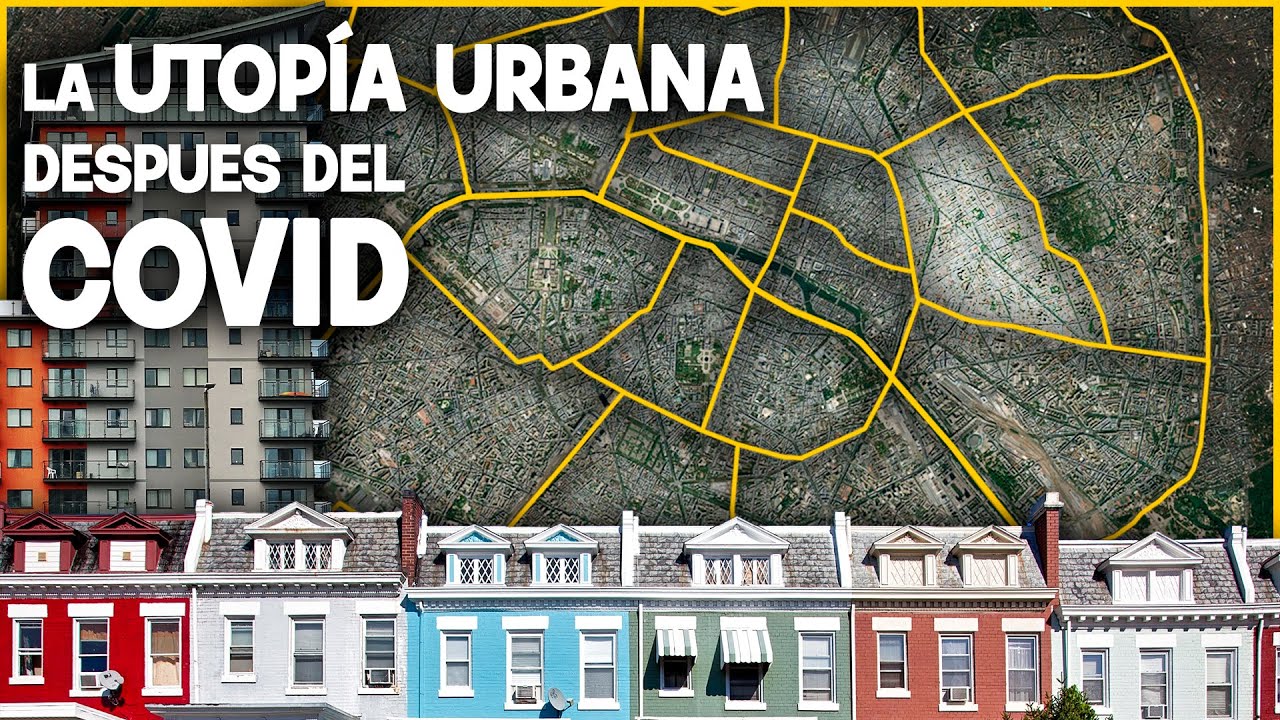What is urban sprawl?
Summary
TLDRUrban sprawl, characterized by low-density housing and increased car reliance, is driven by population growth and the desire for more living space. It leads to energy consumption, pollution, traffic congestion, and a decline in community cohesion. The script discusses the importance of smart growth and sustainable development, emphasizing well-planned urban expansion that balances economic growth with environmental protection and community well-being.
Takeaways
- 🏙️ Urban sprawl refers to the rapid expansion of cities and towns, often characterized by low-density housing and increased reliance on cars.
- 🌆 Sprawl is driven by the need to accommodate rising urban populations and the desire for more living space and amenities.
- 🚗 It correlates with increased energy use, pollution, traffic congestion, and a decline in community cohesion.
- 🌿 The expansion leads to the destruction of wildlife habitats and fragmentation of natural areas.
- 🤔 While growth is inevitable, the script questions whether sprawl is the logical way for it to occur.
- 🚶♂️ Sprawl results in less walking, more driving, and consequently, less exercise and more pollution.
- 🏡 The idea of living close to the city but within commuting distance is considered ideal for many.
- 🌱 The concept of 'smart growth' is introduced as a way to channel growth into existing areas while preserving space and protecting the environment.
- 🏞️ Well-planned developments and sustainable development are suggested as alternatives to sprawl, aiming for a balance between society, economy, and environment.
- 🌟 The focus should be on making existing places better rather than necessarily slowing sprawl.
Q & A
What is urban sprawl?
-Urban sprawl refers to the rapid expansion of geographic extent of cities and towns, often characterized by low-density residential housing, single-use zoning, and increased reliance on private cars for transportation.
What are the typical features of urban sprawl?
-Typical features of urban sprawl include low-density residential areas, single-use zoning, and a high dependency on private vehicles for transportation.
How does urban sprawl affect the environment?
-Urban sprawl can lead to increased energy use, pollution, traffic congestion, and a decline in community stigmas and cohesiveness. It also results in the destruction of wildlife habitats and fragmentation of natural areas.
What are the social implications of urban sprawl?
-Urban sprawl can lead to a decline in community stigmas and cohesiveness, as well as contribute to a worse quality of life due to less walking, more driving, less exercise, and less green space.
Why does urban sprawl occur?
-Urban sprawl occurs due to the need to accommodate a rising urban population and often results from a desire for increased living space and other residential amenities.
What is the correlation between urban sprawl and energy consumption?
-Urban sprawl is correlated with increased energy consumption because it often involves more driving, more pavement, and more built space, all of which require energy.
Why is controlling urban sprawl important?
-Controlling urban sprawl is important to mitigate its negative impacts on the environment, such as pollution and habitat destruction, and to improve the quality of life by promoting more sustainable and livable communities.
What is the concept of smart growth in relation to urban sprawl?
-Smart growth is an approach that aims to channel growth into existing areas by investing in cities and older suburbs, while preserving space and protecting the environment, as an alternative to uncontrolled sprawl.
How can sustainable development help address the issues of urban sprawl?
-Sustainable development can address urban sprawl by ensuring that societal, economic, and environmental considerations are equally weighted, promoting more balanced and responsible growth.
What are some strategies to counteract the negative effects of urban sprawl?
-Strategies to counteract urban sprawl include promoting public transportation, creating mixed-use developments, preserving green spaces, and implementing policies that encourage density and limit urban expansion.
Why is it ideal to live close to the city but within commuting distance?
-Living close to the city but within commuting distance is ideal because it allows for access to urban amenities while potentially avoiding some of the negative aspects of urban sprawl, such as long commutes and a lack of community.
Outlines

هذا القسم متوفر فقط للمشتركين. يرجى الترقية للوصول إلى هذه الميزة.
قم بالترقية الآنMindmap

هذا القسم متوفر فقط للمشتركين. يرجى الترقية للوصول إلى هذه الميزة.
قم بالترقية الآنKeywords

هذا القسم متوفر فقط للمشتركين. يرجى الترقية للوصول إلى هذه الميزة.
قم بالترقية الآنHighlights

هذا القسم متوفر فقط للمشتركين. يرجى الترقية للوصول إلى هذه الميزة.
قم بالترقية الآنTranscripts

هذا القسم متوفر فقط للمشتركين. يرجى الترقية للوصول إلى هذه الميزة.
قم بالترقية الآنتصفح المزيد من مقاطع الفيديو ذات الصلة

What's the difference - rural or urban? Powered by @GeographyHawks

Urban Sprawl: Which U.S. City Sprawls the Most?

Consequences of Population Distribution [AP Human Geography Review Unit 2 Topic 2]

The Genius Plan to Change Amsterdam

Why Living in Spain has Become Impossible

¿Son Las CIUDADES DE 15 MINUTOS De Verdad Una Buena Idea? || Urbanópolis
5.0 / 5 (0 votes)
